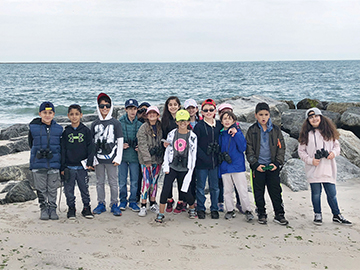
Audubon Adventures

Activities
 Activity 2
Activity 2
Step Up, Stewards!
 Teacher-led Classroom Activity
Teacher-led Classroom Activity
Science/Research Skills/Writing/Art
What local outdoor place needs stewardship?
Objective
Students will learn how to protect and value a local area.
Students will need:
- Paper and pencils
- Research resources (newspapers, magazines, reliable websites, etc.)
- Art supplies for creating posters or brochures; video or audio recording devices
Suggested time:
One class period for discussion, researching, and planning; another for creation; and a third for presentations.

What to do:
- Talk about environmental stewardship with the class. Ask students what they think that means, what it might entail, and check for understanding. Encourage students to give examples of specific activities, like patrolling beaches for unleashed pets, removing invasive plants, picking up riverfront trash, stopping erosion on a trail, etc.
- Move on to a discussion of the local natural areas students have visited that they think need more stewardship. Nature preserves, wildlife refuges, and other formally designed areas are options, but so are city parks, local lakes, riverfronts, hiking trails, etc. Keep track of the suggested places on the board, and challenge students to vote or come to a consensus on a single place.
- Have groups of students research the chosen area and decide what sort of stewardship it needs. Does it need to be cleaned up, protected from ATVs, have trails rebuilt, nest boxes added, etc.? Ask: What information would help the public be better stewards? What can be done to care for the place? Why is this place valuable people and the environment? What is the main message you want to convey?
- Assign or allow student groups to choose their own method of message delivery. They can create a poster, write a song, record or videotape a public service announcement, make an informational brochure or trail guide, write a skit, or any other form of communication. Have them come up with a plan (script, diagram, etc.) for their message and then provide students with the art materials or technology needed to create them.
- Once completed, invite student groups to take turns presenting their messages to the whole class. Then discuss which ones were effective and why.
- Follow up by working with the class to identify and contact local authorities/property owners who might be able to help implement the plans.
Photos: (t to b) Peggy Cook; Amanda Pachomski/Audubon New York.




